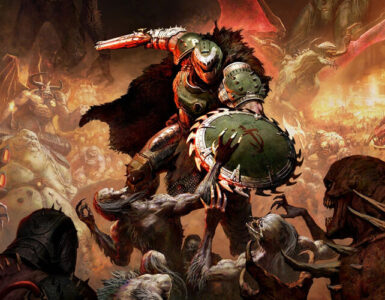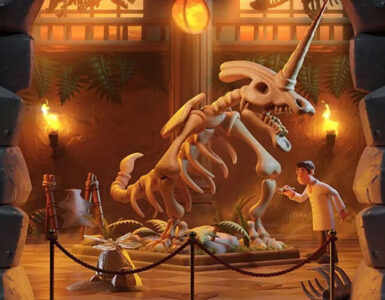- Shares
- 168
The Wild West is often romanticized in Hollywood as a place of danger, high stakes, and tons of Mexican standoffs (read: staring matches) between lawmen and outlaws. In video games, much of that also rings true, especially with the hugely-popular Red Dead Redemption franchise by Rockstar Games. Riding along the vast, endless plains of the U.S. of A like a badass cowboy has long been the fantasy of many, and it is games like those that really elevate the immersiveness of that fantasy.
But there’s another type of cowboy game — one where you don’t explore the vastness of the wilderness on horseback or get into gun-slinging firefights with ruffians who stare at you the wrong way. In MiMiMi and THQ Nordic’s Desperados III, it’s all about exercising restraint and executing your moves as smoothly as possible, like a well-trained stealthy SWAT team. But with cowboys.

The third installment in the cult classic real-time tactics (RTT) franchise, Desperados III is actually a prequel to the 2001 classic Desperados: Wanted Dead or Alive. It follows the origin of the bounty hunter John Cooper, and his eventual first encounters with the equally-iconic characters of the franchise, including Doctor McCoy and Kate O’Hara, and their first few adventures together through the US in the 1870s against the dastardly DeVitt Company. For newcomers to the franchise, this is actually a great jumping-on point due to its nature as a prequel to the original games.
The story in Desperados III is engaging and paced well throughout. Again, as a precursor to the original games, it provides context as to how Cooper gets caught up in his conflict with the DeVitt Company, and how he became a bounty hunter because of it. The tone of the story is generally serious, but still packs enough for some well-timed humour, especially with the banter among party members. Despite some rather lacklustre voice acting, the writing is what carries the game’s narrative and gives it personality.
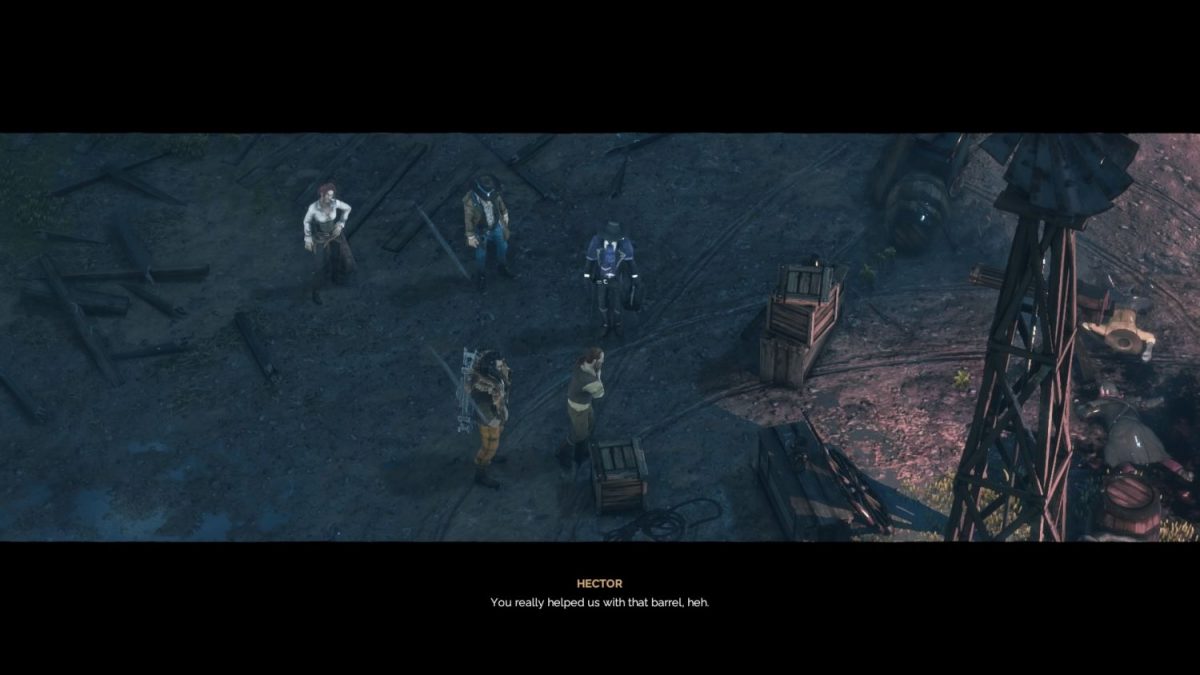
For those who played the original Desperados games, on the other hand, this will no doubt feel like a return to form for the franchise, where the last game came out in 2006. Given MiMIMi’s success with Shadow Tactics: Blades of the Shogun back in 2016, the tactical and stealth gameplay is as smooth and as engaging as ever, and then some.
Gameplay centres around getting your party members to mission objectives by sneaking into and around various locales, filled to the brim with armed guards, and avoiding their view cones in the process. Players can use each individual party member’s unique skills to help distract, subdue, or escape from guards, oftentimes using their individual skills in tandem with one another.
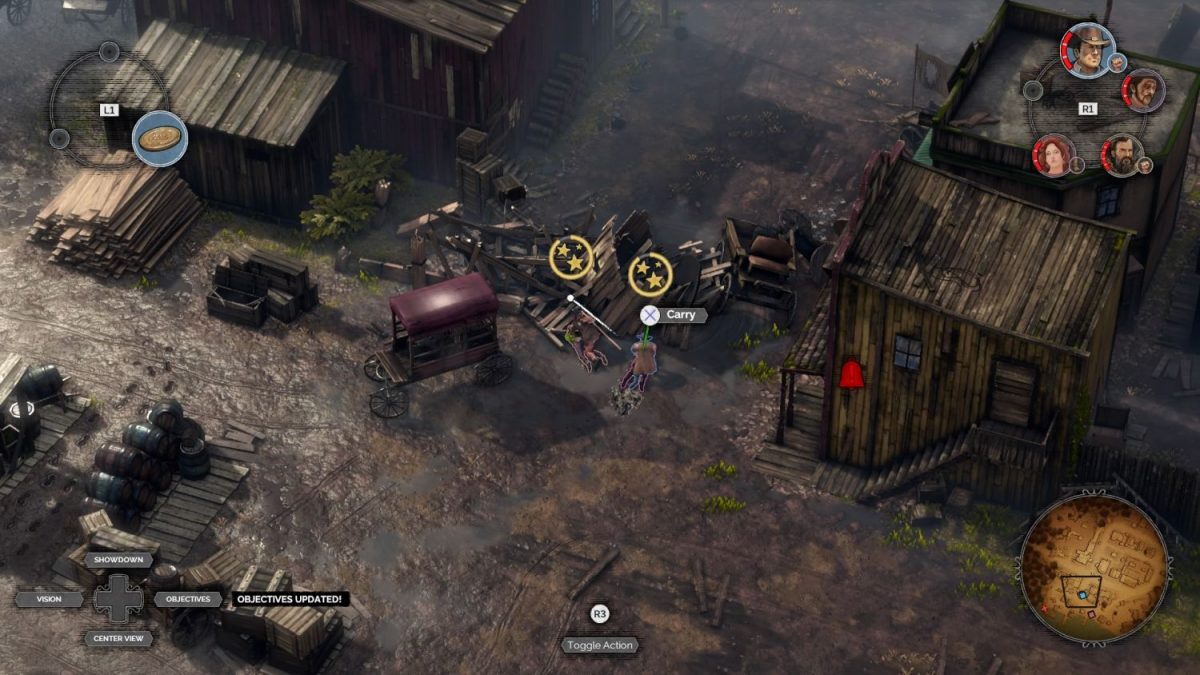
The five playable characters are distinct from one another, not just in personality, but in abilities, which makes gameplay all the more interesting. John Cooper specialises in throwing knives and killing two folks at once with his dual pistols; Hector Mendoza is your big man, with the ability to lay down his big bear trap, Bianca, as well as lay the smackdown on the toughest enemy types in the game; Isabella Moreau is the mystical member of the group, with the ability to perform voodoo and possess enemies for a limited amount of time, and so on.

Though not every mission will allow you to use them all at once, having to use any combination of them requires players to think on their feet and weigh how each character’s strengths and weaknesses play into how each mission is to be carried out. The best part is that no two characters are exactly the same in terms of abilities, which makes playing them together a blast, especially if you mix it up with the game’s new feature: Showdown Mode.
Showdown Mode is essentially the “pause” button of Desperados III, which allows players to line up their moves and abilities among party members, so as to be able to execute them simultaneously. Though it seems counter-intuitive to the real-time aspect of this game, this new mode is what makes gameplay truly shine, as it allows players to really express themselves tactically and perform feats that would otherwise have been impossible in previous entries.

And of course, should everything go awry, there are the Quick-Save and Quick-Load options that have become a staple in RTT games. The game constantly encourages players to Quick-Save after every move they make with a reminder that spells out how long was ago was your last save. This is useful, especially before attempting to sneak past or execute moves on enemies, and Quick-Load if all hell breaks loose.

That said, while the intent of these features is to help players quickly get back into the quick of things, loading in general is frustratingly slow on the PS4, compared to the PC version of the game, which is near-instant in its Quick-Loading. This really slows gameplay down to a crawl, especially in particularly challenging areas, where mistakes are expected to occur frequently. In this case, it’s not the difficulty that makes the experience of playing Desperados III on the PS4 really frustrating at times, but the fact that players have to wait quite a bit just to get back into the thick of things. It breaks up the momentum, frankly, wastes quite a lot of time. Even loading up each mission from the main menu takes abysmally long, which further exacerbates the issue. Perhaps a future patch might help to mitigate this issue, but even then, it makes playing this game on consoles not as optimal.
While the story is linear, each mission required to advance the story is a semi-sandbox, where players can choose to complete objectives in various ways, such as choosing whether to kill enemies using the environment around them, or go to town on them with your character’s own tools. In some missions, there are also multiple objectives that players can pick and choose from (though they can all be completed anyway), which allows for a nice bit of freedom and replay value.
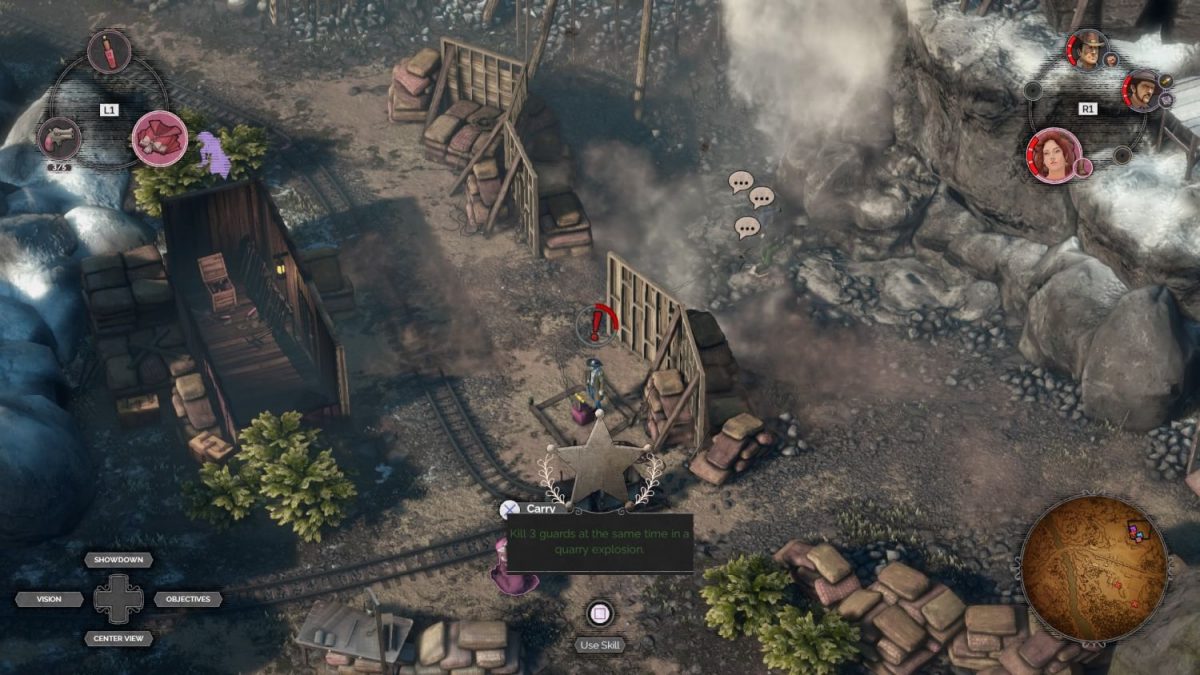
Speaking of replay value, there are various achievements, or stars, as the game calls it, one can obtain at the completion of every mission, provided they meet the necessary requirements. These can range from not using disguises to killing X number of enemies, or even completing the entire mission without saving even once. Obtaining these stars adds an interesting challenge to folks who wish to test out their tactical mettle even further.
And if that wasn’t enough, there are also The Baron’s Challenges, which is the game’s optional challenge mode for the most hardcore of players to flex their tactical skills. These challenges let players play through certain levels in the game, but with a neat little twist or two that makes things interesting, such as playing only Isabelle in a certain mission, or using only guns to complete another. There will be more Baron’s Challenges that will be included in future updates, which again increases the replay value of Desperados III.
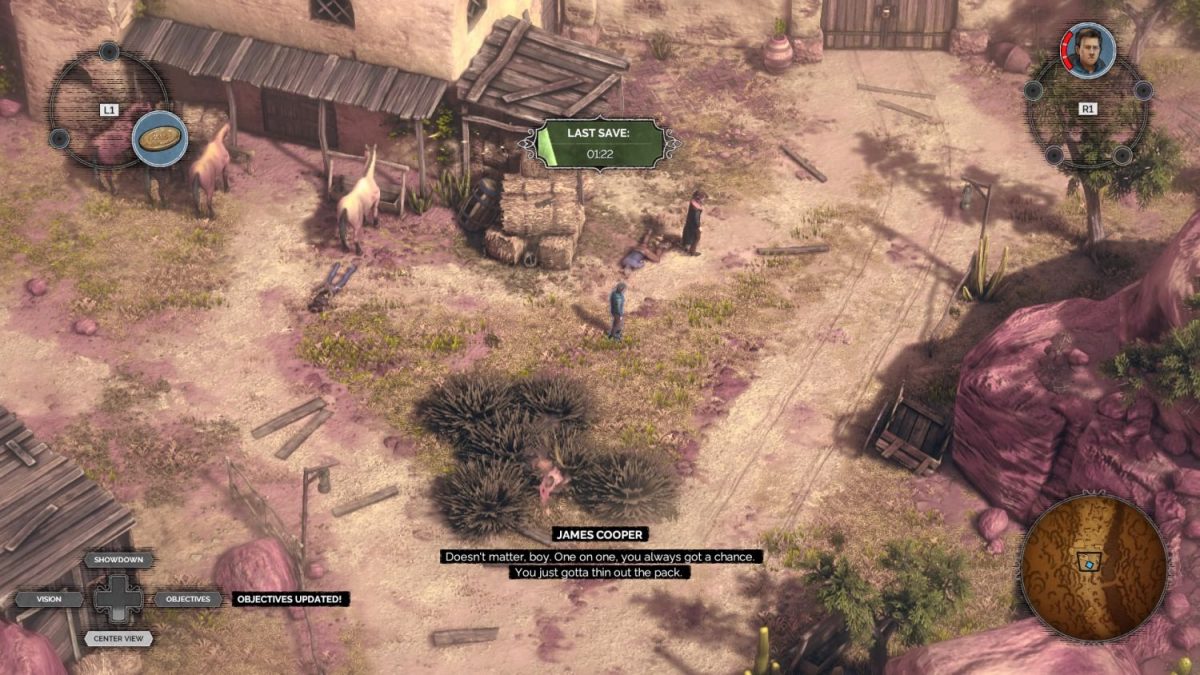
When the dust has settled, Desperados III is a true tactical feast for fans of the genre. It is unforgiving in its difficulty but hugely rewarding when you overcome the challenges it poses in each mission. This is all thanks to the really smooth tactical gameplay that MiMiMi has so acutely refined over the years. Where the series goes from here is still a mystery to us, but we can be confident that the franchise has a developer that has managed to hit the bullseye on making a great sequel to one of the most memorable franchises in the early 2000s.
GEEK REVIEW SCORE
Summary
If you’ve delved deep into the Desperados franchise, or just have an affinity for RTT games in general, then Desperados III is a no-brainer for you. Brutally-difficult, its steep learning curve and skill ceiling will no doubt leave even the most hardened of players with some brutally-engaging gameplay throughout. Just remember to quick-save after every move you make.
Overall
8.4/10-
Gameplay - 8.5/10
8.5/10
-
Story - 8/10
8/10
-
Presentation - 8/10
8/10
-
Value - 9/10
9/10
User Review
( votes)Marion has a serious RPG addiction. Sometimes it bleeds into real life; he forgets to sleep because he thinks he has a Witcher’s body clock. Forgive him in advance if he suddenly blurts out terms such as “Mind Flayer” and “Magic Missile”, because never once does he stop thinking about his next Dungeons & Dragons game.



